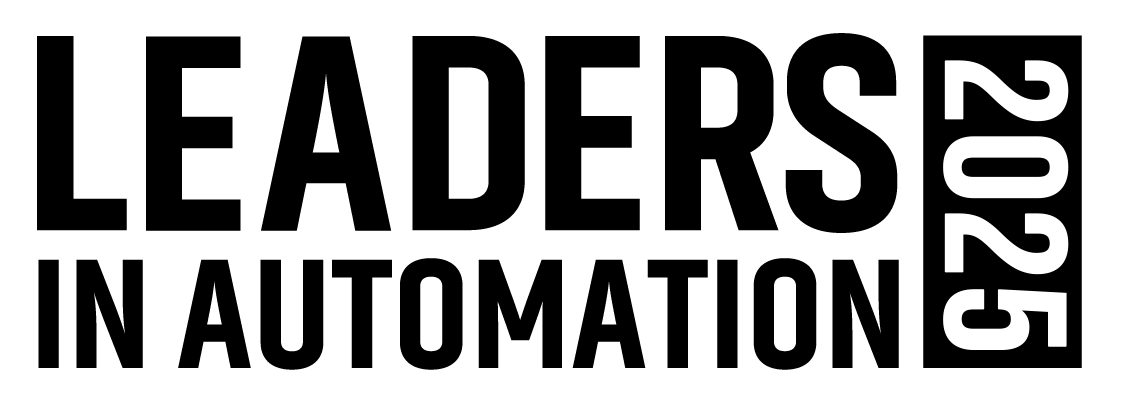A Pulse Check on Manufacturing’s Digital Transformation
- Legacy systems shouldn’t be seen as roadblocks to digital transformation, as modern tools like IO-Link, MQTT and OPC UA can bridge data gaps and connect isolated systems without costly rip-and-replace approaches.
- For successful digital transformation projects, manufacturers should focus on pilot projects that align with core business goals and offer high impact, while exploring use of subscription-based SaaS models to help spread costs over time and reduce IT infrastructure burdens.
- Companies that prioritize employee training and culture change are more than twice as likely to succeed in digital transformation, requiring a balance of internal skill development, new digital talent acquisition and proper change management.
Over the last several years, there’s been a lot of talk about digital transformation and its benefits for manufacturing. Yet many in industry still wonder what it all means for their operations and what implementation practicalities are required.
While multiple definitions of digital transformation abound, simply put, it is the change that new computing, communications and connectivity technologies bring to manufacturing processes. “This transformation weaves together advances in technologies such as artificial intelligence (AI), the industrial Internet of Things (IIoT) and cloud computing, along with related changes in organizational processes,” explained Karthik Gopalakrishnan, solutions consultant at Yokogawa.
“Digital transformation in manufacturing isn’t just about adopting new technology,” added Michael Hart, head of industry strategy and growth at Rockwell Automation. “It’s about rethinking how decisions get made, how people work and how value moves through the business.”
This synergy among people, processes and technology has become crucial in today’s environment where manufacturers face intensified global competition, heightened demand for product customization and frequent disruptions in supply chains as well as pressures to meet sustainability targets and address challenges posed by workforce turnover.
To get more granular insights into what digital transformation really means for manufacturers today, Automation World spoke with:
- Dustin Beebe (DB), vice president of marketing for Emerson’s Guardian software and solutions business.
- Karthik Gopalakrishnan (KG), solutions consultant at Yokogawa.
- Michael Hart (MH), head of industry strategy and growth at Rockwell Automation.
- Dustin Johnson (DJ), chief technology officer at Seeq.
- Jeff Payne (JP), director of business development at AutomationDirect.
- Greg Tink (GT), director of industrial digital transformation at Schneider Electric.
- Dale Tutt (DT), vice president of industry strategy at Siemens Digital Industries.
AW: What are the primary goals manufacturers should hope to achieve through digital transformation?
JP: Manufacturers implement digital transformation for the same reasons they make any business decision: to improve quality and lower cost. Data-driven digital transformation can help manufacturers to find energy efficiencies, improve processes and minimize rework.
KG: At the core, manufacturers should aim for greater operational efficiency from automation and predictive maintenance. Digital transformation technologies can also improve product quality through real-time monitoring and advanced analytics and enhance customer relations by allowing faster deliveries and greater flexibility in customization. Greater agility and innovation also enable manufacturers to respond quickly to market changes, emerging opportunities and regulatory expectations.
DJ: Advanced analytics and generative AI (genAI) are two of the most powerful tools accelerating companies’ digital transformation. Analytics insights drive productivity through actionable monitoring and diagnostics focused on process control performance and service factors, energy usage and sustainability metrics, and employee interactions with regulatory control layers. These process control-focused monitoring and diagnostic data are easily scaled across controllers, control valves and similar processing equipment to rapidly identify and prioritize optimization opportunities. Especially when combined with genAI, advanced analytics enable enhanced decision making, more predictive power, higher operational efficiency, and simplified onboarding and training.
A nice thing about SaaS is it helps overcome another financial challenge, namely maintaining a fairly large IT organization to manage these systems and the necessary infrastructure.
AW: How do legacy systems affect the digital transformation process?
DT: Most of the time, legacy processes and systems are part of the digital transformation. Sometimes, they are part of an older transformation process in which digital tools were implemented 10 or 15 years ago. Maybe a company is working with an older ERP or MRP system that it must be able to connect to. Whatever the legacy system may be, companies have to think about how to connect that data and leverage it as they start to transform other processes within their operations. Legacy systems can pose some challenges, but they do not prevent a digital transformation from being implemented. We have never come across a situation where we have not been able to help a customer with digital transformation because of their legacy systems.
JP: Driving digital transformation can be quite challenging, depending on a site’s age and original design. The key is the data. Many tools are available for accessing and communicating otherwise isolated data. Modern PLCs, for example, readily support data collection through many OT-centric communication protocols. IO-Link is one that turns binary field-sourced signals into digital bytes of data that provide status, health, quality, efficiency and other important information. Then, with the help of IT-centric protocols like MQTT, OPC UA, Node-Red, HTTP and FTP the data is more seamlessly transferred to upstream systems to feed databases, dashboards and emails.
MH: Legacy systems can be one of the biggest barriers for manufacturers because they often create silos of data, limit flexibility and force teams to rely on manual workarounds that slow everything down. But most manufacturers can’t just rip and replace these systems, and they shouldn’t have to. They need a practical path forward, like our elastic MES approach, that addresses today’s needs and sets manufacturers up for the future.
AW: How does digital transformation affect the workforce and what are the chief challenges in preparing employees for it?
GT: Digital transformation reshapes the workforce by automating tasks, enhancing productivity and creating new roles. That’s why ignoring people and the culture of the workplace will ensure that any effort at digital transformation will fail. On the other hand, companies that prioritize workforce engagement are 2.6 times more likely to succeed in their digital efforts.
Internal training programs can foster the development of digitally savvy teams that are ready to tackle the complexities of modern technologies. Continued development of these teams supports retention efforts that keep strong, experienced teams together.
DJ: Employees must be given time and training to interact with and learn how to use analytics and genAI types of software most effectively. It is necessary to emphasize that analytics and AI software cannot replace process expertise, but it instead furthers the value of employee’s skillsets by empowering them with tools to examine production trends, investigate potential issues and optimization opportunities, and dive deep into data exploration and operational correlations.
We need to develop a workforce that can work in harmony with the technology, rather than just throwing new technology at workers without putting the proper change management in place. One way to do this is by using simulation to ensure that the technology is ready to run, procedures are updated and personnel are trained before implementation.
Bringing in new talent with specialized digital skills is equally important to inject fresh perspectives and expertise into the team. So is developing strong digital leadership capable of guiding teams through change and fostering a forward-thinking mindset.
DB: As we make processes more autonomous, we need to develop a workforce that can work in harmony with the technology, rather than just throwing new technology at workers without putting the proper change management in place. One way that manufacturing organizations are navigating this challenge is by using simulation to ensure that the technology is ready to run, procedures are updated and personnel are trained before implementation.
AW: What are the financial challenges associated with digital transformation?
MH: Cost, risk and return always need to be in balance. For most manufacturers, it’s not a question of whether digital transformation is necessary; it’s whether it’s realistic.
DT: One financial challenge has been the large upfront investment in on-premises software companies needed to buy and maintain year over year. To move away from these large capital expenditures, Siemens has expanded its software-as-a-service (SaaS) offerings to move toward a subscription model. This way, the software becomes more of an operational expense that is spread out over time.
Legacy systems can pose some challenges, but they do not prevent a digital transformation from being implemented. We have never come across a situation where we have not been able to help a customer with digital transformation because of their legacy systems.
The other nice thing about SaaS is it helps overcome another financial challenge, namely maintaining a fairly large IT organization to manage these systems and the necessary infrastructure. With SaaS, automation suppliers manage the software to reduce some of the cost burden.
AW: How do you recommend manufacturers prioritize digital transformation initiatives given budget constraints and competing priorities?
GT: Focus on initiatives that directly align with key business goals, such as improving efficiency or enhancing customer experience. Starting with small, measurable pilot projects allows for validating value before scaling investments and prioritizing those projects that offer high impact with manageable complexity can generate some quick wins without stretching resources. Then, by leveraging existing systems, assigning cross-functional teams to address real pain points and choosing initiatives that enable adaptability, manufacturers can further maximize ROI and support sustained progress despite limited budgets.
KG: A well-defined digital roadmap is crucial for success. This roadmap should outline clear milestones and key performance indicators to track progress, ensure accountability and enable informed decision-making
AW: What challenges do you foresee as digital transformation continues to evolve in the manufacturing industries?
MH: Three factors that typically represent the biggest challenges to digital transformation today are: managing complexity across systems and sites; making AI usable, not just experimental; and closing the workforce gap as roles and skills evolve.
More digital transformation insights from Automation World:
About the Author
James R. Koelsch, contributing writer
Contributing Editor

Leaders relevant to this article:





